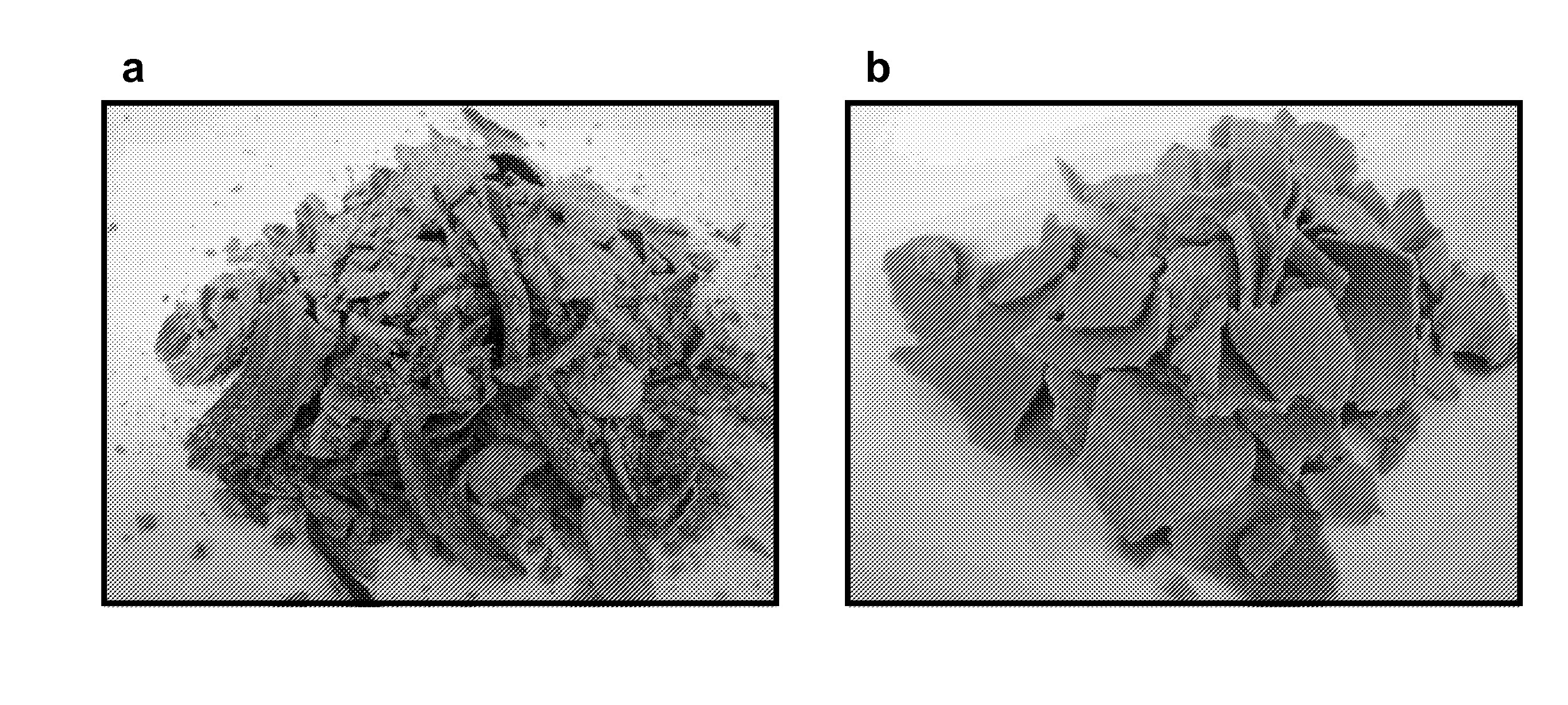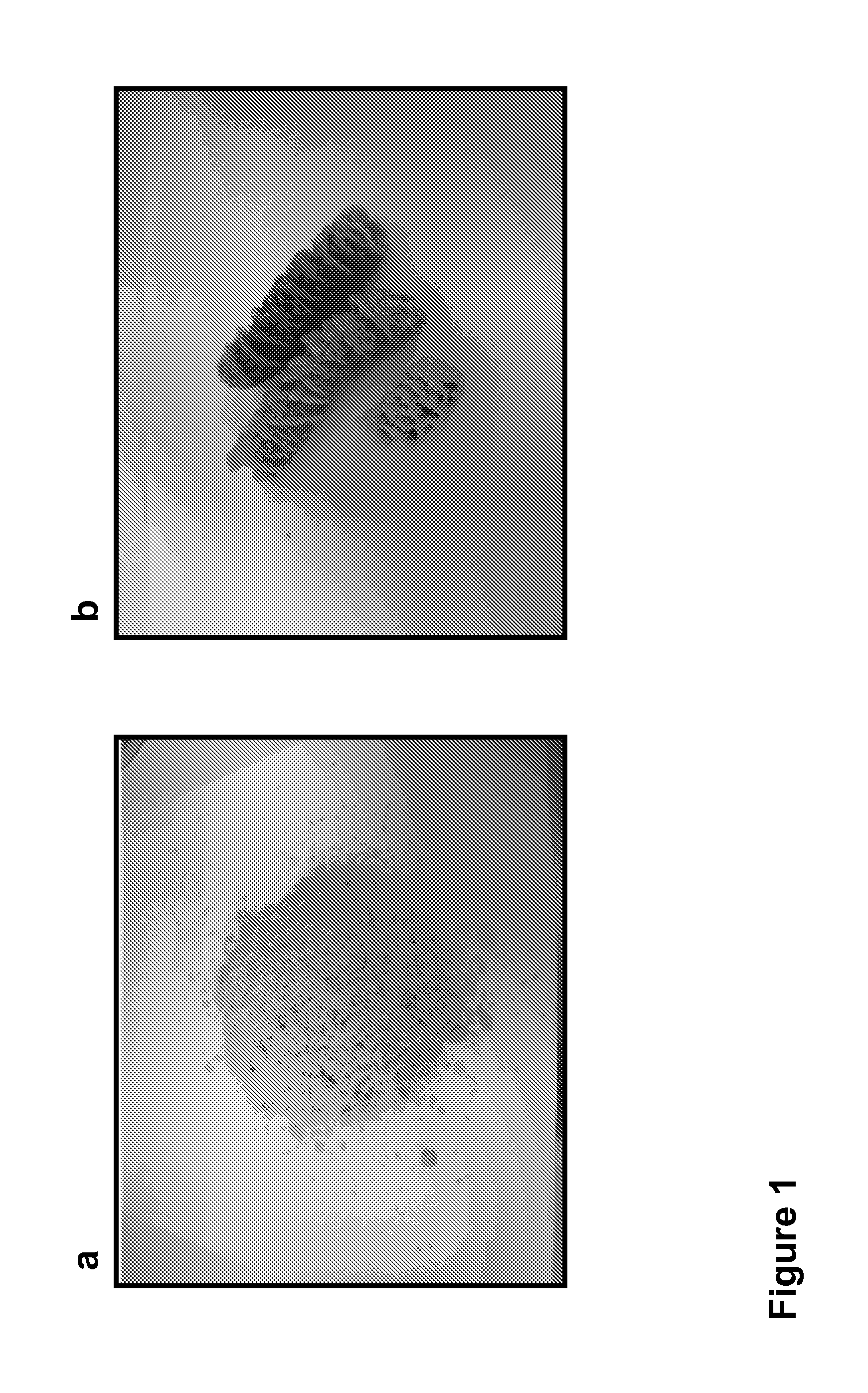Methods of microbial oil extraction and separation
a technology of oil extraction and microorganisms, applied in the direction of fatty oil/fat separation, fatty oil/acid recovery from waste, fatty oil/fat refining, etc., can solve the problems of increasing the demand for energy, and increasing the cost of hydrocarbon fuels. , to achieve the effect of reducing lipids and lipid conten
- Summary
- Abstract
- Description
- Claims
- Application Information
AI Technical Summary
Benefits of technology
Problems solved by technology
Method used
Image
Examples
example 1
Cultivation of Microalgae to Achieve High Oil Content
[0237]Microalgae strains were cultivated to achieve a high percentage of oil by dry cell weight. Cryopreserved cells were thawed at room temperature, and 500 μl of cells were added to 4.5 ml of medium (4.2 g / L K2HPO4, 3.1 g / L NaH2PO4, 0.24 g / L MgSO4.7H2O, 0.25 g / L citric acid monohydrate, 0.025 g / L CaCl2 2H2O, 2 g / L yeast extract) plus 2% glucose and grown for 7 days at 28° C. with agitation (200 rpm) in a 6-well plate. Dry cell weights were determined by centrifuging 1 ml of culture at 14,000 rpm for 5 minutes in a pre-weighed Eppendorf tube. The culture supernatant was discarded and the resulting cell pellet washed with 1 ml of deionized water. The culture was again centrifuged, the supernatant discarded, and the cell pellets placed at −80° C. until frozen. Samples were then lyophilized for 24 hours and dry cell weights were calculated. For determination of total lipid in cultures, 3 ml of culture was removed and subjected to an...
example 2
Diversity of Lipid Chains in Microalgal Species
[0244]Lipid samples from a subset of strains grown in Example 1, and listed in Table 5, were analyzed for lipid profile using HPLC. Results are shown below in Table 8.
TABLE 8Diversity of lipid chains in microalgal species.Microalgal StrainC:14:0C:16:0C:16:1C:18:0C:18:1C:18:2C:18:3C:20:0C:20:1C. protothecoides0.5710.3003.7770.5214.241.450.270(UTEX 250)C. protothecoides0.618.700.302.4271.9814.211.150.200.24(UTEX 25)C. kessleri (UTEX0.689.8202.8365.7812.941.4600397)C. kessleri (UTEX1.4721.9604.3522.649.585.23.883.32229)Prototheca012.010050.3317.14000stagnora (UTEX327)Prototheca1.4129.440.703.0557.7212.370.970.330moriformis (UTEX1441)Prototheca1.0925.7702.7554.0111.902.4400moriformis (UTEX1435)
example 3
Drum Drying Microalgal Biomass
[0245]An F-tank batch of Chlorella protothecoides (UTEX 250) (about 1,200 gallons) was used to generate biomass for extraction processes. The batch was allowed to run for approximately 100 hours, while controlling the glucose levels at 16 g / L, after which time the corn syrup feed was terminated. Residual glucose levels dropped to approximately 0 g / L two hours later. The final broth volume was 1,120 gallons. Both in-process contamination checks and a thorough analysis of a final broth sample failed to show any signs of contamination. The microalgal biomass contained 38% oil based on dry cell weight (DCW).
[0246]The microalgal biomass was then dried on an atmospheric double drum dryer. The broth was fed through a nozzle onto the two steam-heated drums that were counter-rotating toward each other. The broth was mechanically spread by the action of the counter-rotating drums into thin split sheets on both hot cylinders. The adhering thin sheets of broth were...
PUM
| Property | Measurement | Unit |
|---|---|---|
| thick | aaaaa | aaaaa |
| temperature | aaaaa | aaaaa |
| particle size | aaaaa | aaaaa |
Abstract
Description
Claims
Application Information
 Login to View More
Login to View More - R&D
- Intellectual Property
- Life Sciences
- Materials
- Tech Scout
- Unparalleled Data Quality
- Higher Quality Content
- 60% Fewer Hallucinations
Browse by: Latest US Patents, China's latest patents, Technical Efficacy Thesaurus, Application Domain, Technology Topic, Popular Technical Reports.
© 2025 PatSnap. All rights reserved.Legal|Privacy policy|Modern Slavery Act Transparency Statement|Sitemap|About US| Contact US: help@patsnap.com



